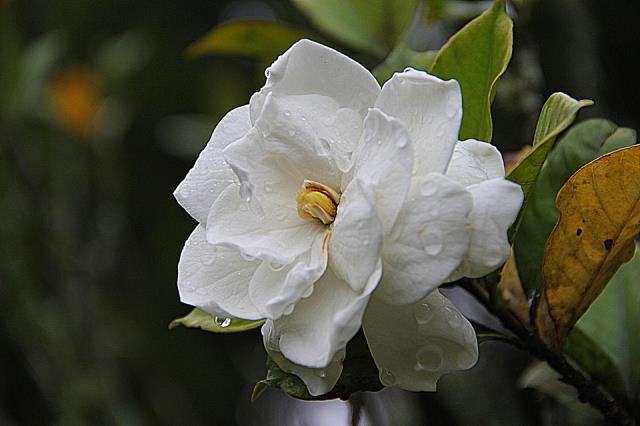By Beatrice Hawkins
I was passing a nursery today and saw an advertisement for ground cover gardenias … not something that suits all climates but an absolutely beautiful plant as a shrub, groundcover or standard.
Gardenias do really well in pots as their requirements – re soil, drainage and position – can be more easily controlled if you do not have an ideal position to plant directly in your garden.
If you are like me and really wish to grow one of these beautiful, fragrant shrubs, a standard form in a pot may be the answer.
They prefer a rich, slightly acidic, humus rich, free draining soil in a frost free situation.
Morning sun and light shade in the afternoon is ideal as gardenias will burn in full sun. They have a shallow and sensitive root system so mulch well with good quality mulch.
Gardenias are native to Africa, Southern Asia, Australasia and Oceania. There are 142 species of this flowering plant that is part of the coffee family.
It was named for the Scottish born, American naturalist, Dr Alexander Garden (1730-1791). The fruits are used in traditional Chinese medicine for their cleaning, calming and cooling properties. The flowers produce a yellow colouring used as a dye.
The flowers are reputed to have been the favourite of Sigmund Freud, are the traditional flower used for button holes for evening wear in France and are the national flower of Pakistan!
Given rich, slightly acidic, soil, plenty of water and a warm – but not hot – position they will do well.
Most problems with gardenias from yellowing leaves to bud fall can be traced to a stressed plant, so the first line of attack is to give a good fertilise and water.
If the leaves continue to yellow after an application of Epsom Salts to rectify a magnesium deficiency, the problem may be nematodes on the roots.
A simple chemical-free method of control that may work is to plant marigolds near the gardenia as they will deter nematodes. Scale and mealy bug may also be a problem due to stress, but if not cured with good nutrition, may be controlled with Pestoil.
If all of these conditions are met, be amazed with a beautiful display of fragrant, perfectly shaped, creamy white, blooms from spring through summer and into autumn.
I have one in garden beds on each side of my front door for their beautiful perfume. They were my mother’s favourite flower but she was never successful in growing them. Maybe with the new cultivars I will have more luck.
To propagate, take half hardened cuttings in late spring and summer or they can be raised from seed, although I haven’t tried either method. I am afraid any I grow will be purchased from a nursery.
This week I’m going to ask you some garden questions. For those who don’t have access to the internet we will publish the answers elsewhere in the paper. See how many you can guess before looking them up on the internet.
1. A kumquat is a small variety of what sort of fruit?
2. Which fruit was known as the “love apple”?
3. Harry Wheatcroft is a renowned breeder of what?
4. What is the largest and tallest tree in the world?
5. Which grain is used to make semolina?
6. What do Yew, Laburnum seeds and Mistletoe berries have in common?
And finally – a question and answer.
What is the largest and tallest tree in Australia?
It is the Mountain Ash, eucalyptus regnans, and is the second tallest growing tree species in the world. The tallest specimen, nicknamed Centurion, stands at 99.6 metres in Tasmania’s Arve Valley. It is the world’s tallest flowering plant and known hardwood tree.
*This is an old article that has been digitised so our readers have access to our full catalogue.







